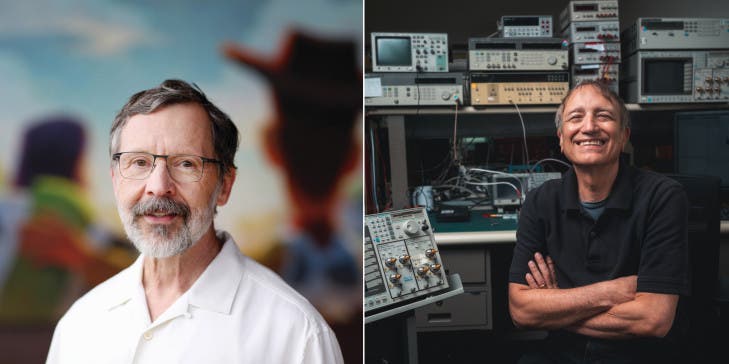Pat Hanrahan and Edwin Catmull, also known for their work at Pixar, have officially won the $1M Turing Award — the “Nobel Prize” of computing.

Every year, the Association for Computing Machinery (ACM) presents the Turing Award, for “lasting and major technical importance to the computer field”. This year, the prize went to two people that helped bring some of our favorite movies to the screen and redefined computer graphics.
In a statement, ACM said Hanrahan and Catmull “fundamentally influenced the field of computer graphics through conceptual innovation and contributions to both software and hardware. Their work has had a revolutionary impact on filmmaking, leading to a new genre of entirely computer-animated feature films.”
In the 1980s, Catmull co-founded Pixar, hiring biophysics PhD Hanrahan as one of the first employees in 1986. They spent most of their time modeling surfaces, finding out ways to best display them realistically, including the light, shadow, and physical interactions.
Hanrahan was principally responsible for creating the now-famous RenderMan Interface — a 3D animation application that allows producers to turn real photographs into rendered images. RenderMan might not sound all that familiar, but Toy Story, Finding Nemo, and Cars might — all these movies, and many more, were made using this technology. Catmull himself invented other groundbreaking animation techniques, too: Z-buffering, which determines which part of an object are and aren’t visible on screen, and texture mapping, which adds realism to graphics.
It took a long time for the industry to wake up to what this technology can offer (the first movies started popping up 20 years later), but the technology would ultimately prove groundbreaking.
It’s an important recognition of momentous contributions with practical, real-life applications.
As for the two award recipients, they were thrilled.
“The announcement came totally out of the blue and I am very proud to accept the Turing Award,” said Hanrahan, who is the Canon Professor in the School of Engineering and a professor of computer science and of electrical engineering at Stanford University. “It is a great honor, but I must give credit to a generation of computer graphics researchers and practitioners whose work and ideas influenced me over the years.”
Catmull was equally excited, emphasizing that technology and art can work brilliantly together.
“What I’m most proud of is keeping an environment in Pixar where we kept the technology and the art in balance for so many years,” said Catmull. “We established a relationship between a group of artists who want to do something new and technical people that work on things people normally don’t see. It leads to this really phenomenal dynamic between the two.”
Hanrahan only worked at Pixar for a few (crucial) years, but he boasts a very fruitful academic career, being involved in several impactful projects, including the interactive data visualization software company Tableau.


